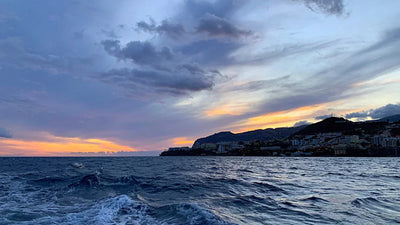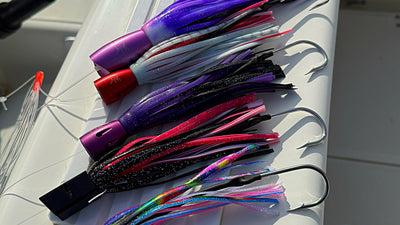If we talk about deep sea trolling, which in the rest of the world is called big game, we Mediterranean fishermen have only to learn from our ocean colleagues. Among the various lessons that they don't want to get into our heads is one that concerns a seemingly useless trick but that, in the case of an unexpectedly oversized prey, could be fundamental: doubling before the terminal.
In big game, which includes some fishing techniques that we can define as more challenging, in the sense that they target very large fish, such as marlin and tuna, it is common practice to use a doubling , or in any case a part of the line that is doubled , before the actual shock leader . This “ reinforcement ” has quite ancient origins, when the way of fishing was certainly different from the current one.
Nowadays, while in the rest of the world it continues to be widely used, in the Mediterranean the culture has been lost, or more likely it never arrived. The slightly polemical accent is not accidental, but is rather aimed at underlining how, especially in Italy, we tend to distort some techniques, with the belief that as long as everything goes well, it means we are doing everything well.

Why dubbing?
Let's take two steps back, the first to clarify that by " big game " we are mainly referring to deep sea trolling , sometimes heavy drifting, and the second to understand what is the purpose of what until a few years ago existed only in the form of doubling , to then be replaced by a sort of preterminals of larger diameter .
The ideal setup for deep sea trolling includes a main line that is connected to a swivel with snap hook , to which the leader will be connected , via a loop , which will be thicker and of the right length to prevent the fish with its tail fin from touching and damaging the main line . Just think that the regulation shock leaders in marlin fishing tournaments are about 7 meters long, and that when the mate touches the leader at any point, even if the fish were to later come unhooked, it would be valid for the purposes of the score, that is, it would count as a catch.
During the recovery of a fish, therefore, we will find ourselves in the final stages with the snap-hook against the pulley at the tip of the rod, and the last meters of terminal to be recovered by hand. If this phase might apparently seem safe because, as we said, the last meters beyond the snap-hook are thicker, there is instead a weak point. The latter is represented by that part of the main line between the snap-hook on the tip and the reel... therefore equal to the length of the rod. If our prey were to decide to start again abruptly, we could risk breaking it right at that point.
From the need to make even the last part of the main line more resistant , the doubling was born , usually of a length equal to covering the length of the rod , plus a few turns on the reel spool . Probably the purists of the "direct line to the artificial" will turn up their noses saying that there is no need for it... but personally I would add "until it is needed".

Bimini twist
The doubling par excellence, unique and original, is called bimini twist . This knot , with notable elasticity, is made on the main line forming a loop , to be connected to the snap hook swivel , as long as we need the reinforcement to be long , which will be such thanks to the double line of the loop.
Leaving aside the unwinding of the knot to close the loop, let's imagine that the latter is 250 cm long, while the rod is 180 cm. When, during the recovery, we stop the snap hook just before it can hit the apical, we will have a double line that passes inside all the pulleys, or rings, with a margin of another 50/60 cm inside the reel. We will have thus avoided any breakages, since all the thinner part of the line is abundantly insulated and safe in the spool.

Wind-on
And, if it is right that there is an evolution in techniques, even the production houses have thought about making the dubbing in question commercial. Thus the wind-on was born. This is a piece of nylon several metres long , double the length of the main line , to be connected to the latter and used as if it were the doubling of the bimini twist .
In this case, to connect the nylon and the main line, a loop was made using perforated dacron on one end of the wind-on, and the connection was made using a double loop, to be joined with a lark's head, or a direct knot of the main line on the dacron. In the case of the double loop, it is useless to specify that it would still be preferable to use the bimini knot to make a small one on the main line, and perhaps make a lark's head with several passages between the loops. The usual snap hook with swivel will then be connected to the other end of the wind-on, followed by the terminal.

Pr knot
As an alternative to the wind-on, a very valid solution could be represented by the use of a piece of nylon that is considerably thicker than the main line , but connected to the latter using a PR knot , to be made using a special rotoknotter .
To make the knot we will also need about half a metre of braid, preferably not excessively thin (personally I use a pe8), to wrap around the rotoknotter and then make the pr knot by keeping the two threads joined in parallel, that is, the main line and the reinforcement thread, to which the usual snap hook will then be connected.
I have tested this solution on several occasions. It has an exceptional hold, to say the least, and, personally, I place it in second place among the three alternatives, placing the bimini twist in first place only for the notable advantage of being able to easily redo the doubling with a simple knot, using the same main line without having to depend on other accessories and pieces of other lines.




